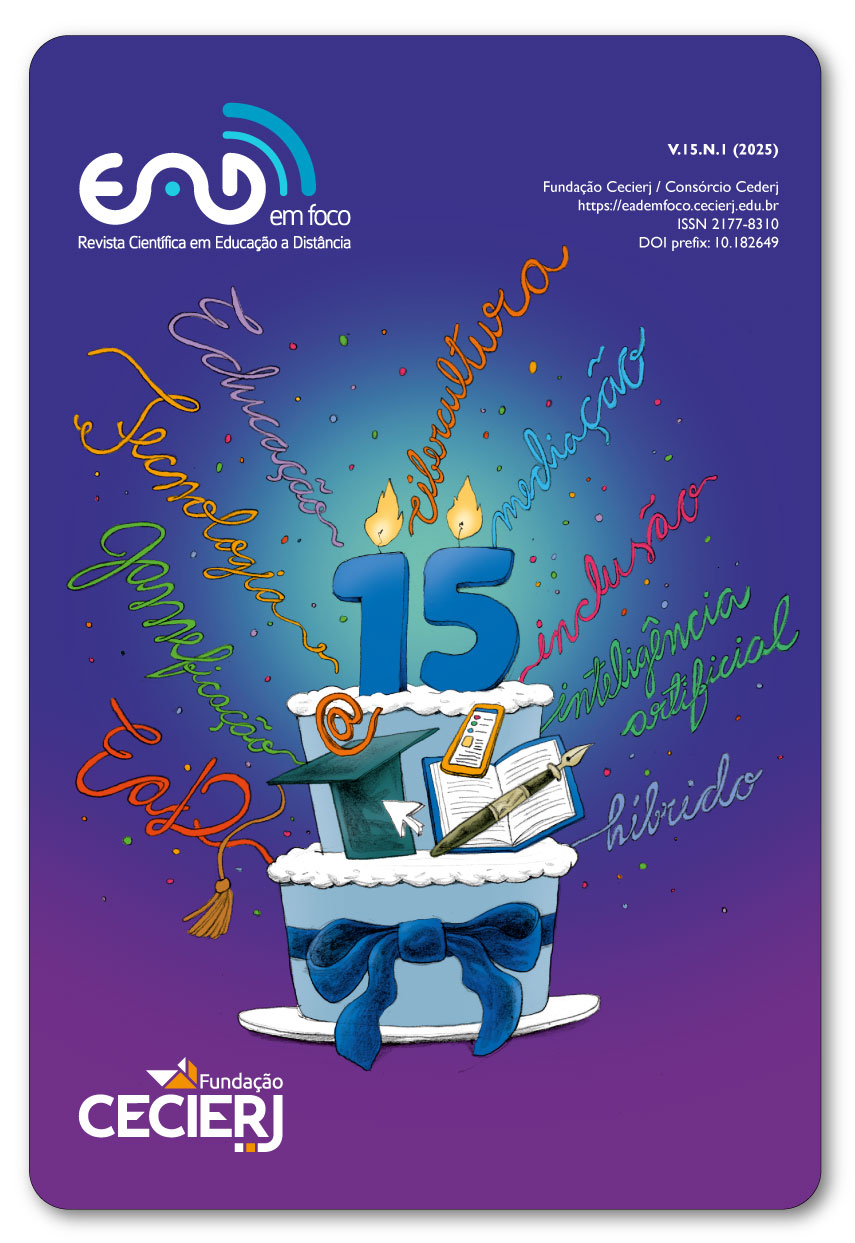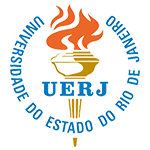Student Permanence in Distance Learning Higher Education Courses: a Reinterpretation of Rovai's Model Based on Bibliometric Research
DOI:
https://doi.org/10.18264/eadf.v15i1.2165Keywords:
Permanence, Higher education, Distance learningAbstract
The expansion of distance higher education courses is a growing reality in Brazil. Since 2020, the modality has registered a greater number of entrants than face-to-face courses. In contrast, general data on student retention in higher education courses points to a decline, warning about the responsibility of managers and educators in relation to improving this modality. Given this panorama, the main objective of this article is to contribute to the theme of student retention in distance higher education courses by re-reading the Rovai model, through bibliometric research, using the ProKnow-C methodology, applied in the Database Scopus. As a result, the most significant permanence factors highlighted in articles of international relevance are presented, as well as a re-reading of the Rovai model, considering these new factors highlighted in the literature. The re-reading will contribute to other researchers who are interested in the topic and to Higher Education Institutions that are looking for improvements in student retention rates in distance higher education courses.
Keywords: Higher education. Distance education. Student permanence. Bibliometrics
Downloads
References
BAWA, Papia. Retention in online courses: Exploring issues and solutions - A literature review. Sage Open, v. 6, n. 1, p. 2158244015621777, 2016.
BROWN, Mark et al. Stories from students in their first semester of distance learning. International Review of Research in Open and Distributed Learning, v. 16, n. 4, p. 1-17, 2015.
DE CARVALHO, Gustavo Dambiski Gomes et al. Bibliometrics and systematic reviews: A comparison between the Proknow-C and the Methodi Ordinatio. Journal of Informetrics, v. 14, n. 3, p. 101043, 2020.
DUTRA. F. B. S. et al. Reformulação da Educação a Distância em Tempos de Pandemia: a Experiência do Curso de Educação Especial e Inclusiva da Fundação CECIERJ. EaD em Foco, v. 11, n. 2, e1253, 2021.
ENSSLIN, L. et al. ProKnow-C, knowledge development process - constructivist. Processo técnico com patente de registro pendente junto ao INPI. 2010.
INEPa - Instituto Nacional de Estudos e Pesquisas Educacionais Anísio Teixeira. Notas Estatísticas 2021 - Censo da Educação Superior. Brasília, 2022. Disponível em: https://download.inep.gov.br/publicacoes/institucionais/estatisticas_e_indicadores/notas_estatisticas_censo_da_educacao_superior_2021.pdf Acesso em 25 jun 2023.
INEPb - Instituto Nacional de Estudos e Pesquisas Educacionais Anísio Teixeira. Notas Estatísticas 2021 - Censo da Educação Superior. Brasília, 2022. Disponível em: https://download.inep.gov.br/publicacoes/institucionais/estatisticas_e_indicadores/resumo_tecnico_censo_da_educacao_superior_2021.pdf Acesso em 25 jun 2023.
LI, Yiwen et al. An empirical study on online learners’ continuance intentions in China. Sustainability, v. 13, n. 2, p. 889, 2021.
MOORE, Michael G.; KEARSLEY, Greg. Educação a distância: uma visão integrada. Traduzido por Roberto Galman. São Paulo: Thomson Learning, 2007.
MULJANA, Pauline S.; LUO, Tian. Factors contributing to student retention in online learning and recommended strategies for improvement: A systematic literature review. Journal of Information Technology Education: Research, v. 18, 2019.
PARK, Ji-Hye; CHOI, Hee Jun. Factors influencing adult learners' decision to drop out or persist in online learning. Journal of Educational Technology & Society, v. 12, n. 4, p. 207-217, 2009.
RAMOS, Wilsa Maria et al. Fatores de evasão e persistência em cursos superiores online. In: CONGRESSO BRASILEIRO DE ENSINO SUPERIOR A DISTÂNCIA. 2014. p. 2197-2210.
ROVAI, Alfred P. In search of higher persistence rates in distance education online programs. The internet and higher education, v. 6, n. 1, p. 1-16, 2003.
SORENSEN, Chris; DONOVAN, Judy. An examination of factors that impact the retention of online students at a for-profit university. Online Learning, v. 21, n. 3, p. 206-221, 2017.
STONE, Cathy; SPRINGER, Matthew. Interactivity, connectedness and 'teacher-presence': Engaging and retaining students online. Australian Journal of Adult Learning, v. 59, n. 2, p. 146-169, 2019.
YU, Jianhui et al. Investigating the influence of interaction on learning persistence in online settings: Moderation or mediation of academic emotions?. International Journal of Environmental Research and Public Health, v. 17, n. 7, p. 2320, 2020.
Downloads
Published
How to Cite
Issue
Section
License
Copyright (c) 2025 EaD em Foco

This work is licensed under a Creative Commons Attribution 4.0 International License.
All articles published in Revista EaD em Foco receive the license
Creative Commons - Atribuição 4.0 Internacional (CC BY 4.0).
All subsequent publications, complete or partial, must be made with the acknowledgment, in citations, of the Revista EaD em Foco as the original editor of the article.













